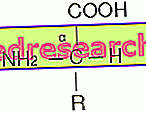Introduction
Breakfast: importance for losing weight
Breakfast function
Contrary to what many people think, breakfast is a main meal for all purposes. Of course, it is quantitatively inferior to the other two, lunch and dinner, but it has a very precise and very important role.
Especially in diets to lose weight, a "wrong" breakfast can frustrate much of the work. This is because it is necessary to:
- Provide the body with the essential energy that, after about 12 hours of fasting and in the context of a long diet, can have an urgent need for calories
- Bridging food cravings from the first awakening; it is an aspect that is sometimes underestimated but which is at the base of most of the unorganized diets or characterized by one - two meals, very abundant, especially of dinner.

Diet to lose weight
Diets to lose weight are diets that promote the elimination of the fat contained in the subcutaneous and visceral adipose tissue. To do this, it is essential that the diet to lose weight:
- Provide fewer total calories than are consumed - low-calorie slimming diet at 70% of normal energy
- Place the organism in an adequate metabolic condition, through nutritional balance and a consequent correct hormonal flow (avoiding the insulin surge, respectively caused by excess calories, especially of refined foods with a high concentration of carbohydrates).
Obviously the basic principles of the diet to lose weight must be reproduced on the single meals, without any exception, without however hindering the food choices most appropriate to the situation.
Features
1st feature of breakfast to lose weight: adequate caloric intake
The right breakfast to lose weight has an adequate caloric intake. Generally, according to the Mediterranean distribution, this meal should provide about 15 % of the total energy . Variations of ± 2/3% are tolerated, but no more, to avoid the risk of nullifying the strategy of organizing meals.
For example, in a 2100 kcal diet, breakfast should provide approximately 315 kcal (between 252 and 378 kcal). "Spannometrically" speaking, to verify the adequacy of the portions (taking for granted the correct choice of food), you should feel appetite about 2 hours and 30 'after breakfast (with the due differences related to subjectivity and lifestyle) . On the other hand, if the diet was a low-calorie diet, for the same person (who does not increase physical activity) the total calories would become 1470 kcal and those of breakfast between 176 and 265 kcal (221 kcal).
2nd feature of breakfast to lose weight: nutritional balance
Breakfast to lose weight must also be balanced. The model of the Mediterranean diet plans to provide approximately 25-30% of calories from lipids (mainly unsaturated, with 2.5% of essential fats), not less than 12-13% (and absolutely no more than 18- 20%) of energy from proteins (from which at least 1/3 of high biological value) and the remainder from carbohydrates, of which a small part simple (10 and not more than 16%); also essential for nutritional balance: 30 g / day of dietary fiber, a share of cholesterol <300 mg / day and the right amounts of vitamins, minerals and polyphenolic antioxidants. For convenience, these properties should be evaluated on the daily or better weekly nutritional regime. It is not mandatory that breakfast provides 15% of all these nutrients; on the contrary, usually a Mediterranean breakfast is mainly oriented to provide: water, simple carbohydrates (from lactose, sucrose and maltose), complex carbohydrates, fibers, calcium, phosphorus and B vitamins (especially B2 riboflavin and B1 thiamine); there is also a modest protein and lipid concentration.
In contrast, most complex glucides will be covered by lunch and protein by dinner; in snacks, secondary meals, the remaining portion of simple carbohydrates (usually consisting of fructose) is contained.
Food
How to choose breakfast foods to lose weight?
As you can see from the examples shown in the table below, the difference between a normal breakfast and a weight-loss breakfast does not consist only in the portion, but also in the choice of foods. The 15% reduction in calories takes place both thanks to a lower "quantity" of food and due to the different nutritional composition.
Milk is always present as a very important source of water, riboflavin and calcium. Furthermore, the small concentration of proteins and the high quantity of water determine a slow digestion of the meal. This feature, in addition to delaying the onset of appetite, decreases the insulin surge that could occur by eating only sweet derivatives of high-glycemic index flours.
By varying the skimming of milk we can increase or decrease the intake of fat and calories. The delattosate diet allows it to be included in the lactose intolerant diet. Soy is ideal for vegans and those suffering from allergies to milk proteins, as long as it is reinforced in potentially deficient nutrients (calcium and riboflavin).
The other group of foods always present is the III, or that of cereals and derivatives. A natural source of starch, these foods structure most of the breakfast's calorie intake. They also help to make certain minerals and vitamins. The fibers decrease the caloric density and also the glycemic index; instead the contribution of salts and vitamins increases.
The jam and honey increase the fraction of simple sugars, with a high glycemic index, therefore more quickly available, and contribute to increasing the palatability of the meal. Cocoa, although it contains mainly fats, has the same food function.
Examples
Examples of breakfast to lose weight
We now offer some examples of breakfast to lose weight referred to different cases and with different needs:
- Case 1 : 29-30 year old male employee, 1.78 cm tall, normal constitution and morphological type, not physical activity. Normocaloric diet 2218 kcal. Low calorie diet 1553 kcal. Normal breakfast 333 kcal. Breakfast to lose weight 233 kcal.
- Case 2 : Employed female 29-30 years, 1.62 cm high, normal constitution and morphological type, does not practice physical activity. Normocaloric diet 2067 kcal. Low calorie diet 1447 kcal. Normal breakfast 310 kcal. Breakfast to lose weight 217 kcal.
- Case 3 : 20-year-old male worker, 1.85 cm tall, lactose intolerant, normal constitution and morphological type, practice 3-4 weekly sessions in the weight room. Normocaloric diet 3231 kcal. Low-calorie diet 2262 kcal. Normal breakfast 485 kcal. Breakfast to lose weight 339 kcal.
- Case 4 : 65-year-old retired housewife (female), takes hormone replacement therapy, vitamin D and calcium, 1.55 cm high, normal constitution and morphological type, practical brisk walking 3 times a week. Normocaloric diet 1822 kcal. Low calorie diet 1275 kcal. Breakfast to lose weight 191 kcal.
Note : the choice of food has been deliberately limited to 2-3 groups of foods. In this way it is easier to understand the differences between the two types of breakfast and how to be able to modify one's own transforming it into slimming. In the same meal we could include fresh fruit, dried fruit, tea etc. (with obvious changes in the nutritional profile).
| Case 1 | Case 2 | ||
| Normal breakfast | To lose weight | Normal breakfast | To lose weight |
| 333kcal | 233kcal | 310 kcal | 217 kcal |
| Partially skimmed cow's milk 300 ml | Partially skimmed cow's milk 250 ml | Skimmed yogurt 300 g | Skimmed yogurt 300 g |
| Cocoa 5g | - | - | - |
| Rusks 24 g | Wholemeal rusks 24 g | Wheat bread 50 g | Whole wheat bread 25 g |
| Traditional jam 30 g | Jam with low sugar content 30 g | Honey 20 g | Honey 10 g |
| Case 3 | Case 4 | ||
| Normal breakfast | To lose weight | Normal breakfast | To lose weight |
| 485 kcal | 339 kcal | 273 kcal | 191 kcal |
| Full-lactose cow's milk 300 ml | Full-lactose cow's milk 250 ml | Reinforced soy milk (in calcium and riboflavin) 300 ml | Reinforced soy milk (in calcium and riboflavin) 250 ml |
| Cocoa 5g | - | - | - |
| Wheat bread 25 g | Whole wheat bread 25 g | Muesli 45 g | Muesli 30 g |
| Traditional jam 10 g | Low-sugar jam 10 g | - | - |
| Muesli 30 g | Muesli 15 g | - | - |
| Simple biscuits 25 g | Whole wheat biscuits 15 g | - | - |



